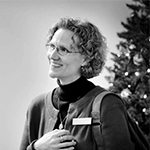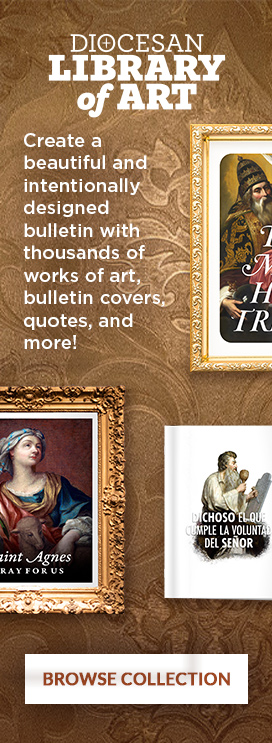In today’s Gospel, we encounter a pivotal moment in the life of Jesus and the foundation of His Church: the profound truth that because of Peter’s clear confession of faith, he becomes the rock upon which Christ builds His Church, bestowing upon Peter the keys to the kingdom of heaven.
Jesus first asks His disciples, “Who do people say the Son of Man is?” This question invites us to consider the perceptions and opinions of the world around us, and the disciples’ responses reflect that diversity. But Jesus desires a deeper understanding from His disciples, one grounded in faith rather than the opinions of the crowds, so he asks, “But who do YOU say that I am?”
Peter, speaking on behalf of the disciples, declares, “You are the Christ, the Son of the living God.” This confession encapsulates the essence of Christian faith—a recognition of Jesus as the Messiah and the divine Son of God. In response to Peter’s proclamation, Jesus affirms that it was not flesh and blood (or the opinions of the crowds) that revealed this truth to Peter but His Father in heaven, and he then confers upon him a unique authority: “You are Peter, and on this rock, I will build my Church.” The name “Peter” itself means “rock,” and in this moment, Jesus establishes Peter as the foundational stone upon which the Church is built.
The granting of the keys to the kingdom symbolizes the authority given to Peter to bind and loose, which refer to the kind of authority familiar to the Apostles. “Binding” refers to the power held by the King’s Master of the Palace in ancient Israel; “loosing” refers to the power of the Jewish synagogue leader to expel and reinstate members from the community, to preserve the synagogue’s religious and moral integrity. By giving this same authority to Peter, Jesus clearly signifies his role as the earthly leader of the Church, with the intent to maintain the Church’s unity of faith, worship, and governance. It is a share in the very authority of Christ, so that we can have confidence in the Church even when things are hard for us to understand. This authority, of course, is meant to be put in service to God’s people, to guide and shepherd the Church, ensuring it remains faithful to Christ, its Foundation and Bridegroom.
In contemplating this passage, we are called to examine our own faith. Are we willing to declare our faith boldly, as Peter did? Do we recognize the Church as a communion of believers, guided by the successors of Peter, the popes, who continue to serve as the earthly shepherds of Christ’s flock?
Faith in Christ is the bedrock of the Church, and through our confession of faith, we are connected to the authority and mission Christ entrusted to Peter and his successors. May we, like Peter, declare our faith in Jesus and participate wholeheartedly in building His Church upon the solid foundation of faith.
En el Evangelio de hoy, encontramos un momento crucial en la vida de Jesús y la fundación de Su Iglesia: la profunda verdad de que debido a la clara confesión de fe de Pedro, él se convierte en la roca sobre la cual Cristo construye Su Iglesia, otorgándole a Pedro las llaves del reino de los cielos.
Jesús primero pregunta a sus discípulos: “¿Quién dice la gente que es el Hijo del hombre?” Esta pregunta nos invita a considerar las percepciones y opiniones del mundo que nos rodea, y las respuestas de los discípulos reflejan esa diversidad. Pero Jesús desea una comprensión más profunda de sus discípulos, una comprensión basada en la fe y no en las opiniones de las multitudes, por lo que pregunta: “Y ustedes, ¿quién dicen que soy yo?”
Pedro, hablando en nombre de los discípulos, declara: “Tú eres el Mesías, el Hijo de Dios vivo”. Esta confesión resume la esencia de la fe cristiana: el reconocimiento de Jesús como el Mesías y el divino Hijo de Dios. En respuesta a la proclamación de Pedro, Jesús afirma que no fue ningún hombre (ni las opiniones de las multitudes) quien reveló esta verdad a Pedro sino su Padre en el cielo, y luego le confiere una autoridad única: “Tú eres Pedro, y sobre esta piedra edificaré mi Iglesia.” El nombre “Pedro” en sí mismo significa “piedra”, y en ese momento, Jesús establece a Pedro como la piedra angular sobre la cual se construye la Iglesia.
La concesión de las llaves del reino simboliza la autoridad dada a Pedro para atar y desatar, que se refiere al tipo de autoridad familiar a los Apóstoles. “Atat” se refiere al poder que ostentaba el Maestro de Palacio del Rey en el antiguo Israel; “desatar” se refiere al poder del líder de la sinagoga judía de expulsar y reintegrar a los miembros de la comunidad, para preservar la integridad religiosa y moral de la sinagoga. Al darle esta misma autoridad a Pedro, Jesús claramente indica su papel como líder terrenal de la Iglesia, con la intención de mantener la unidad de fe, adoración y gobierno de la Iglesia. Es una participación en la autoridad misma de Cristo, para que podamos tener confianza en la Iglesia incluso cuando las cosas nos resultan difíciles de entender. Esta autoridad, por supuesto, debe ponerse al servicio del pueblo de Dios, para guiar y pastorear a la Iglesia, asegurando que permanezca fiel a Cristo, su Fundamento y Esposo.
Al contemplar este pasaje, estamos llamados a examinar nuestra propia fe. ¿Estamos dispuestos a profesar la fe con valentía, como lo hizo Pedro? ¿Reconocemos a la Iglesia como una comunión de creyentes, guiada por los sucesores de Pedro, los papas, que continúan sirviendo como pastores terrenales del rebaño de Cristo?
La fe en Cristo es la base de la Iglesia y, a través de la profesión de fe, estamos conectados con la autoridad y la misión que Cristo confió a Pedro y sus sucesores. Que nosotros, como Pedro, declaremos la fe en Jesús y participemos de todo corazón en la edificación de Su Iglesia sobre el fundamento sólido de la fe.
 Kathryn Mulderink, MA, is married to Robert, Station Manager for Holy Family Radio. Together they have seven children (including Father Rob), and seven grandchildren. She is President of the local community of Secular Discalced Carmelites and has published five books and many articles. Over the last 30 years, she has worked as a teacher, headmistress, catechist, Pastoral Associate, and DRE, and as a writer and voice talent for Catholic Radio. Currently, she serves the Church by writing and speaking, and by collaborating with various parishes and to lead others to encounter Christ and engage their faith. Her website is www.KathrynTherese.com
Kathryn Mulderink, MA, is married to Robert, Station Manager for Holy Family Radio. Together they have seven children (including Father Rob), and seven grandchildren. She is President of the local community of Secular Discalced Carmelites and has published five books and many articles. Over the last 30 years, she has worked as a teacher, headmistress, catechist, Pastoral Associate, and DRE, and as a writer and voice talent for Catholic Radio. Currently, she serves the Church by writing and speaking, and by collaborating with various parishes and to lead others to encounter Christ and engage their faith. Her website is www.KathrynTherese.com
Feature Image Credit: Cristian Gutiérrez, cathopic.com/photo/6181-saint-peter-statue
